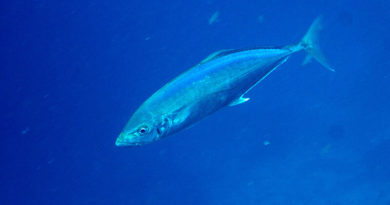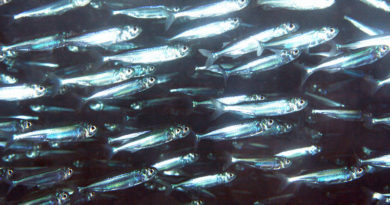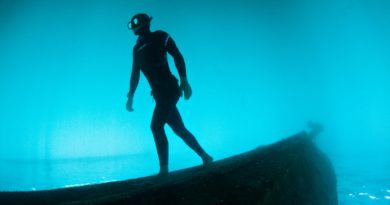The Muck Diving Big Five: GPF, Frogfish, Mimic Octo, Flamboyant Cuttle & Ambon Scorpionfish
In the realm of big-animal safari in Africa (animal watching, not killing!), the “Big Five” are the lion, leopard, rhinoceros, elephant, and African buffalo. Seeing and photographing them rounds off a successful photo safari. These are the super spectacular ones, impressive animals which every visitor wants to see. They are also living in special ecological niches: two apex predators (leopard and lion), and three very large herbivores, including the largest living land herbivore, the African bush elephant. The Big Five give the savannah a face, and a group of animals put in the focus in this way can boost ecotourism. I’m all for it.
The ecosystem I am mostly exploring is the tropical soft-bottom marine habitat, colloquially and among scuba divers called the “muck”. I suggest that academic biologists use the term too! It’s the area underwater (typically less than 30 meters deep) which is dominated by sand, the occasional rock, tree branch and the pieces of human trash (muck diving and rubbish will be topic for a post in the near future). The muck is in sharp contrast to often nearby coral reefs, where cracks, crevices and hiding places are abound. In the muck you have to make your own hiding places or camouflage yourself, or be very dangerous, if you want to survive. I have written about this fascinating habitat before.
On a quick note to the selection of the muck big five animals: I think they are selected in the spirit of the safari Big Five. They are what ecotourists want to see, and they are really unique in the biology. There are of course well-appreciated critters which I didn’t chose: such as nudibranchs, which are less unique to the muck. I have also chosen two cephalopods and three bony fishes, These are the animals with the most interesting, complex behavior. One more thing I would like to point out: “Ghost pipefish” or “frogfish” are of course families, not individual species, but this does the Big Five more justice in my opinion, why chose the robust over the harlequin ghost pipefish. Here we go:
Ghost Pipefish
A pipefish is a close relative of a seahorse; a ghost pipefish is a somewhat less close relative, placed by biologists in the same order (Syngnathiformes) but in a different family (pipefishes + seahorses = Syngnathidae, ghost pipefishes = Solenostomidae). A key difference is that in the ghost pipefishes the female carries the fertilized eggs, not the male as in seahorses. The females are usually also much bigger. Sex changes have been observed by these fishes in captivity. No female present? The bigger male just switched sex. That’s possible in quite a few fish species, depending on the gonad structure. The females carry the eggs between there pelvic fins, and they form a skin structure which fuses with the eggs and provides nutrients and oxygenation to the developing embryos – almost liek a placenta, in a small fish! Amazing.
Check out some ornate ghost pipefish footage from Dauin in the Philippines. If you don’t know what to look for, you can easily miss them during a dive, they are so well camouflaged:
Frogfish
Frogfish are lie-in-wait predators which camouflage as pieces of corals, sponge or algae-covered rocks. They are so “non-fish-shaped” that their prey doesn’t even realize its approaching a fish until it’s too late. They feed on small inverts like crustaceans and fishes. They are relatives of a very species-rich fauna of deep-sea anglerfishes, the fishes with the unique “sexual parasitism”, where the tiny males fuse with the bodies of the much larger females.
The shallow-water frogfish thrive in the muck. Camouflage is a trump card which works very well in this habitat:
Mimic Octopus
The mimic octopus is in many ways the apex of cephalopod evolution. Modern (Coeloid) cephalopods are thriving due to their complex adaptive behavior, not due to their armor or big teeth. The mimicking behavior of the mimic octopus is peak animal behavior. It takes, at least to some degree, a model of the mind of the creature to be deceived to pull off what the mimic octopus pulls off. Here is some of my mimic octo footage … Unfortunately, I don’t see this member of the Muck Big Five as often as I’d like to:
Flamboyant Cuttlefish
Many species of cephalopods can change the colors and patterns of their skins. They do this by contracting or relaxing an array of tiny muscles embedded in the skin. Depending on the state of these muscles, an observer – diver or fish – can see either the superficial or deep skin layers. What’s special about the flamboyant cuttlefish is how fast these pattern changes happen, and what psychedelic beauty they show.
Cephalopods are so vertebrate-like in their behavioral complexity and sensory performance, but so far distant from us in relatedness (vertebrates – mollusks) that they have been the subject of quite a bit of sci-fi-esque speculation. Are they “aliens”? Certainly not. Did they run an advanced civilization in ancient times? I discuss the idea in the blog post below:
Even if they are not aliens and likely never were the masters of their own civilization, they are a fascinating part of the “muck” fauna.
There was a taxonomic revision – a change in the official scientific name – for the flamboyant cuttlefish. Footage of the animal and an explanation of how the name change happened is in this video:
Ambon Scorpionfish
A very “muck” fish is the Ambon scorpionfish. Why would I say this?
Mostly a fish is an animal roughly shaped like a carp or a trout, and it’s an animal capable of fast swimming. The often explosive swimming performance of skills is what sets them apart from so much of the other fauna in aquatic ecosystems. The Ambon scorpionfish, named after a place in Indonesia, is quite the opposite: it looks more like a ball of filamentous algae, and it can’t swim very well at all. Contrasting this “muck” niche with the biology of jackfish is the topic of this video:
Best Fishes,
Klaus


